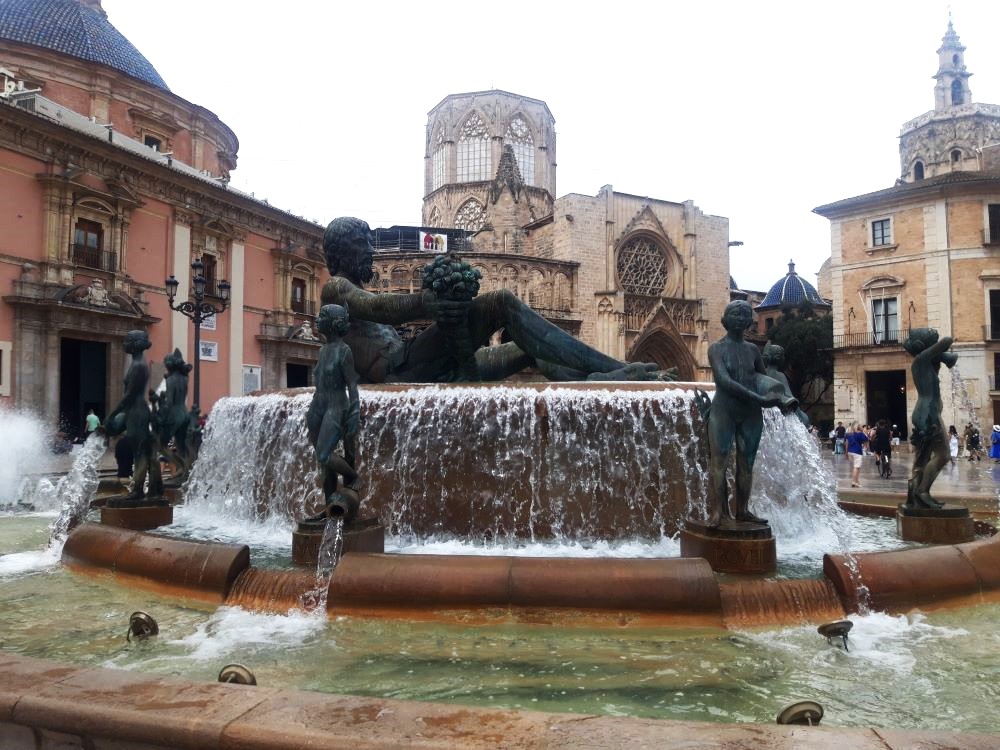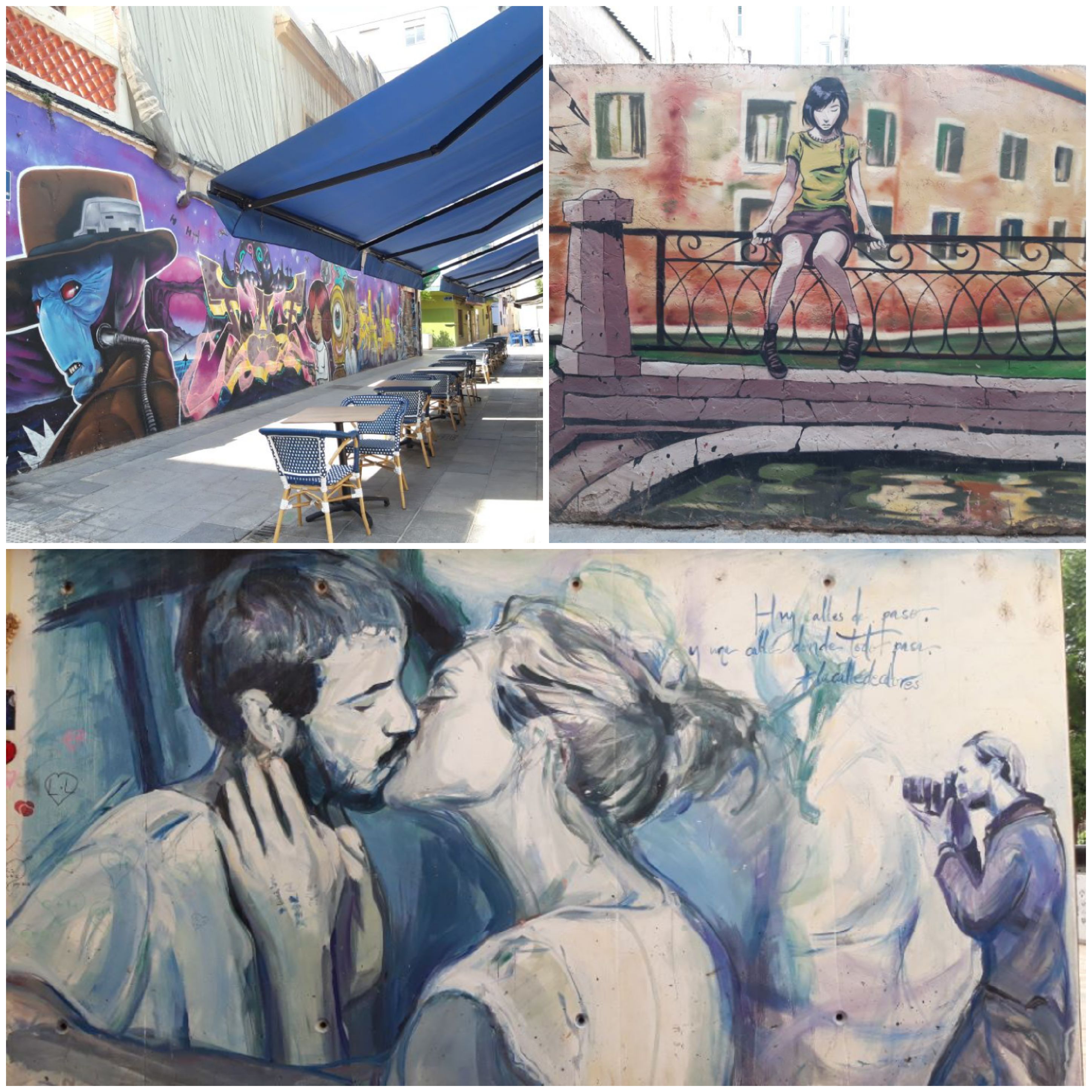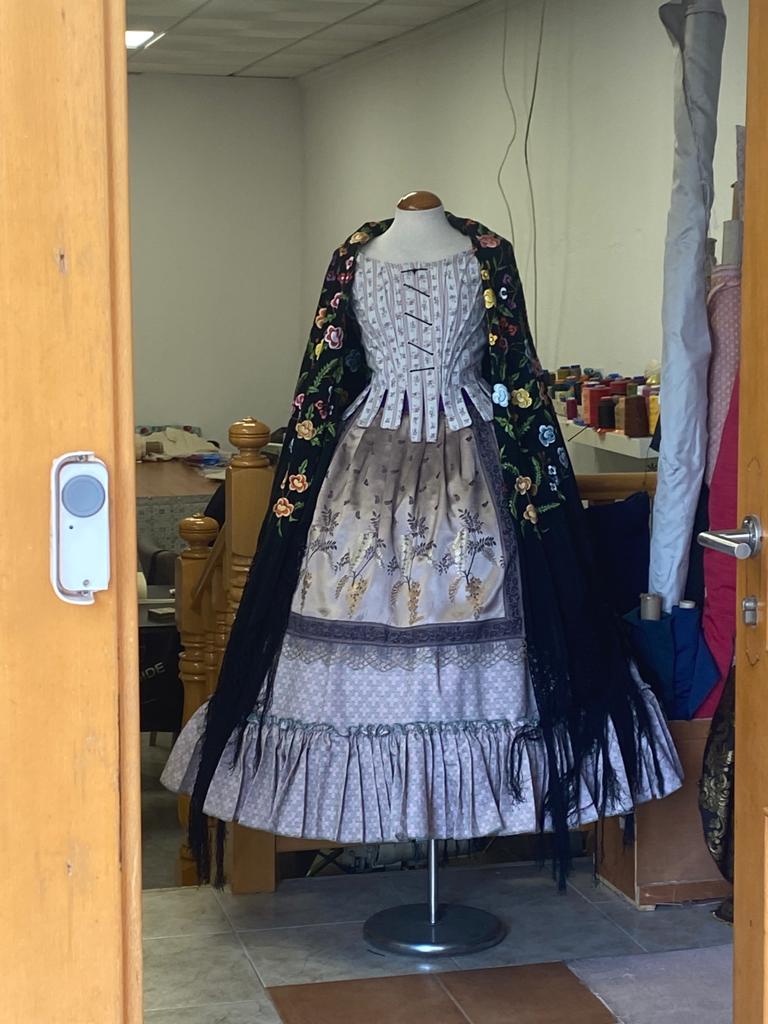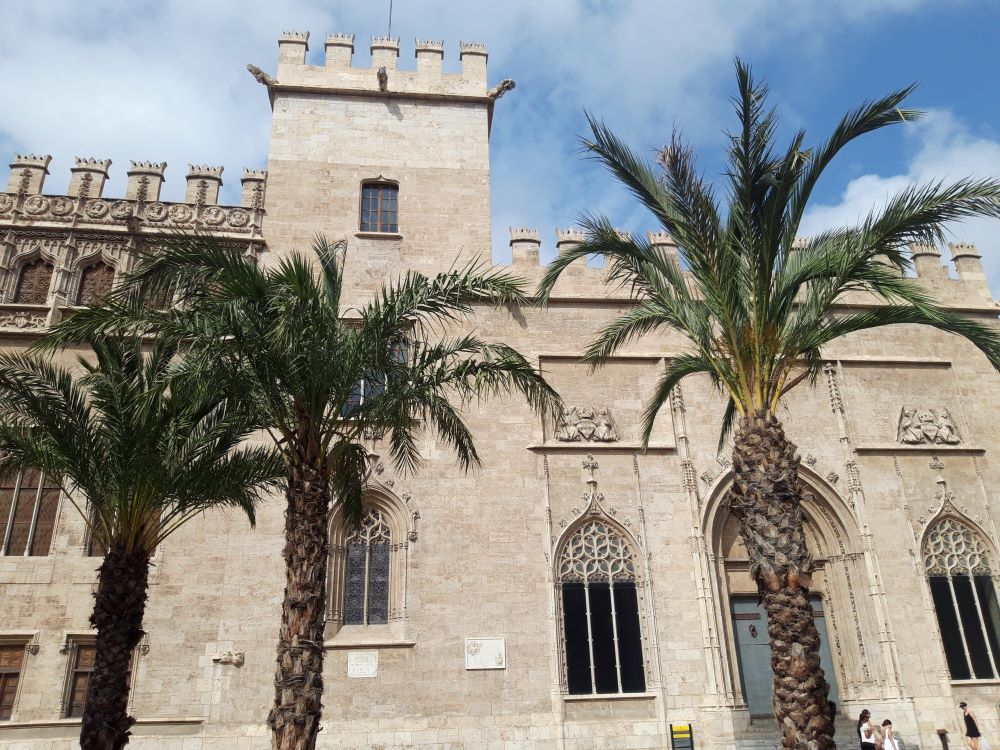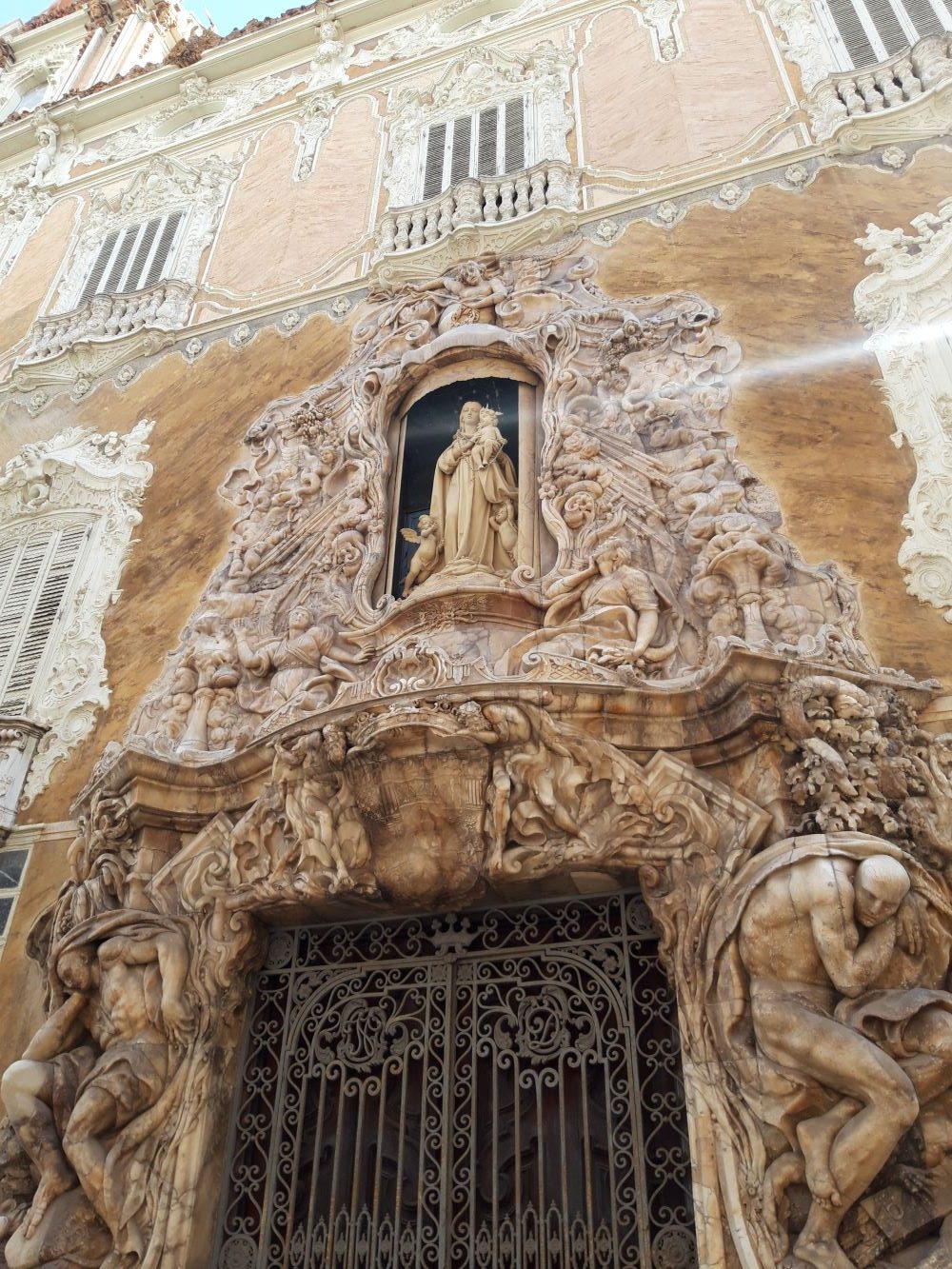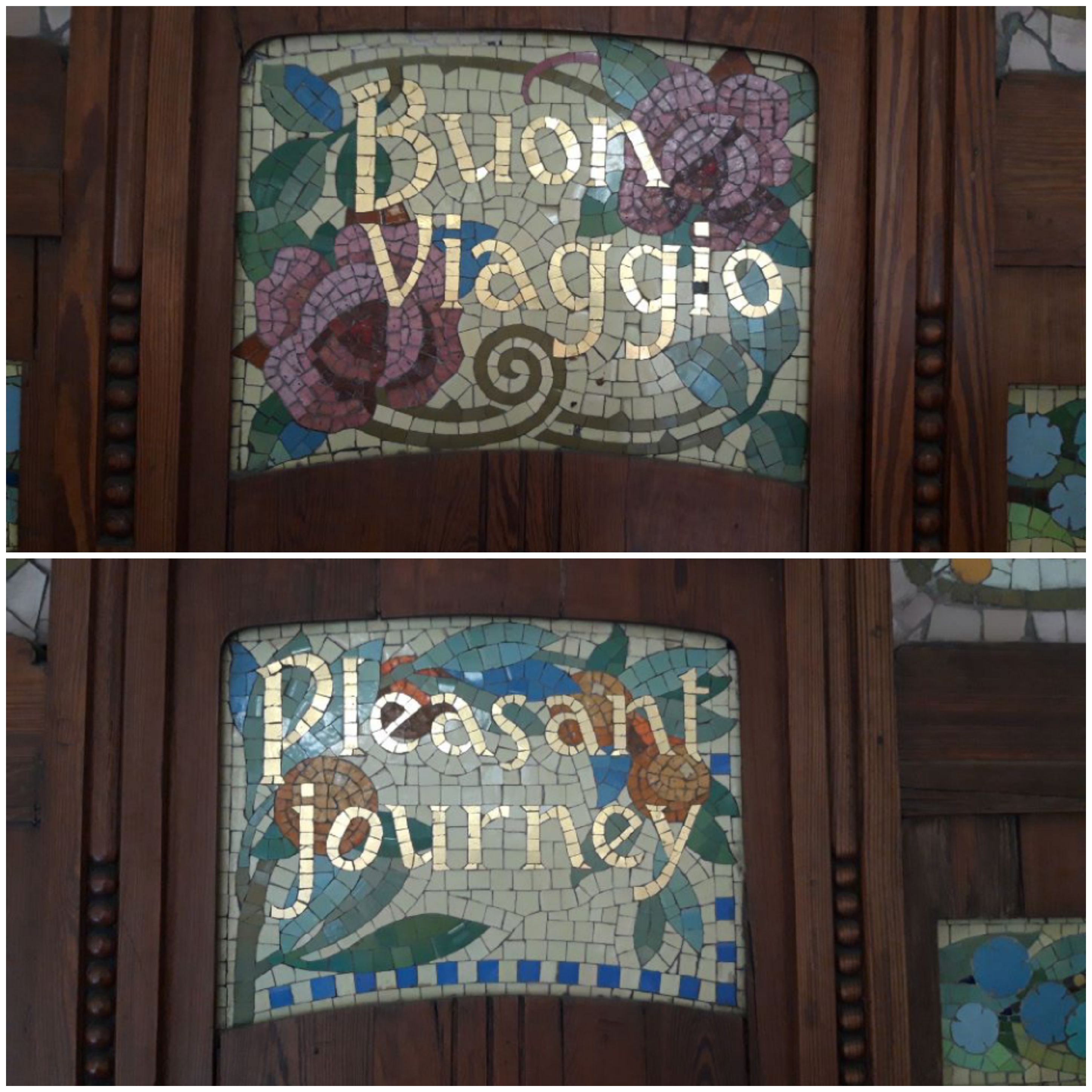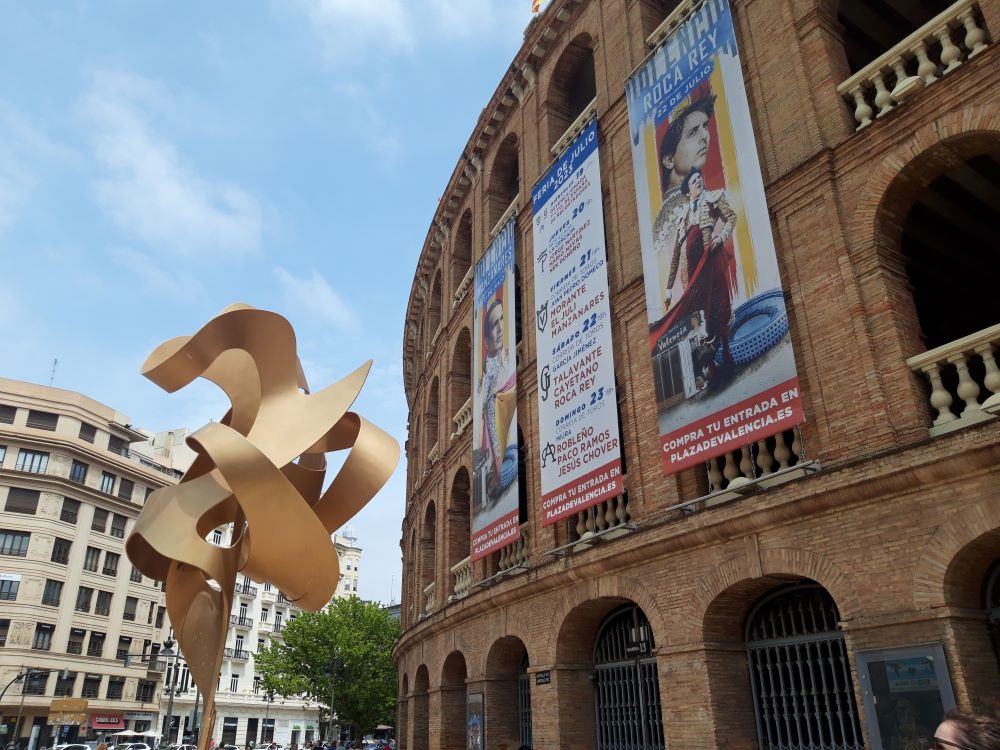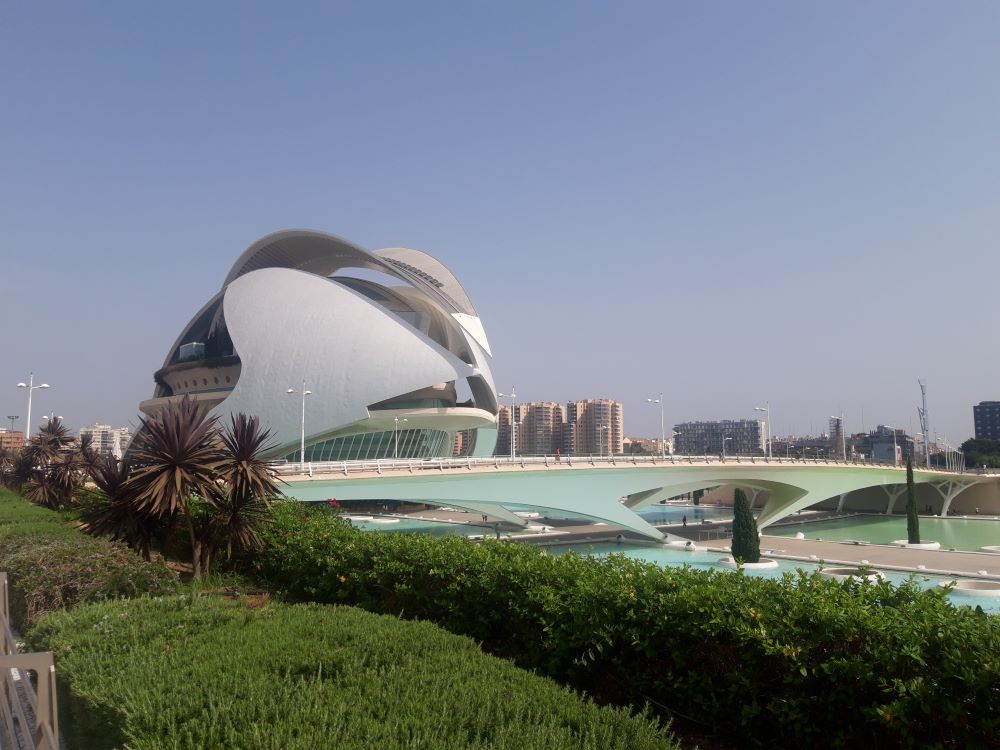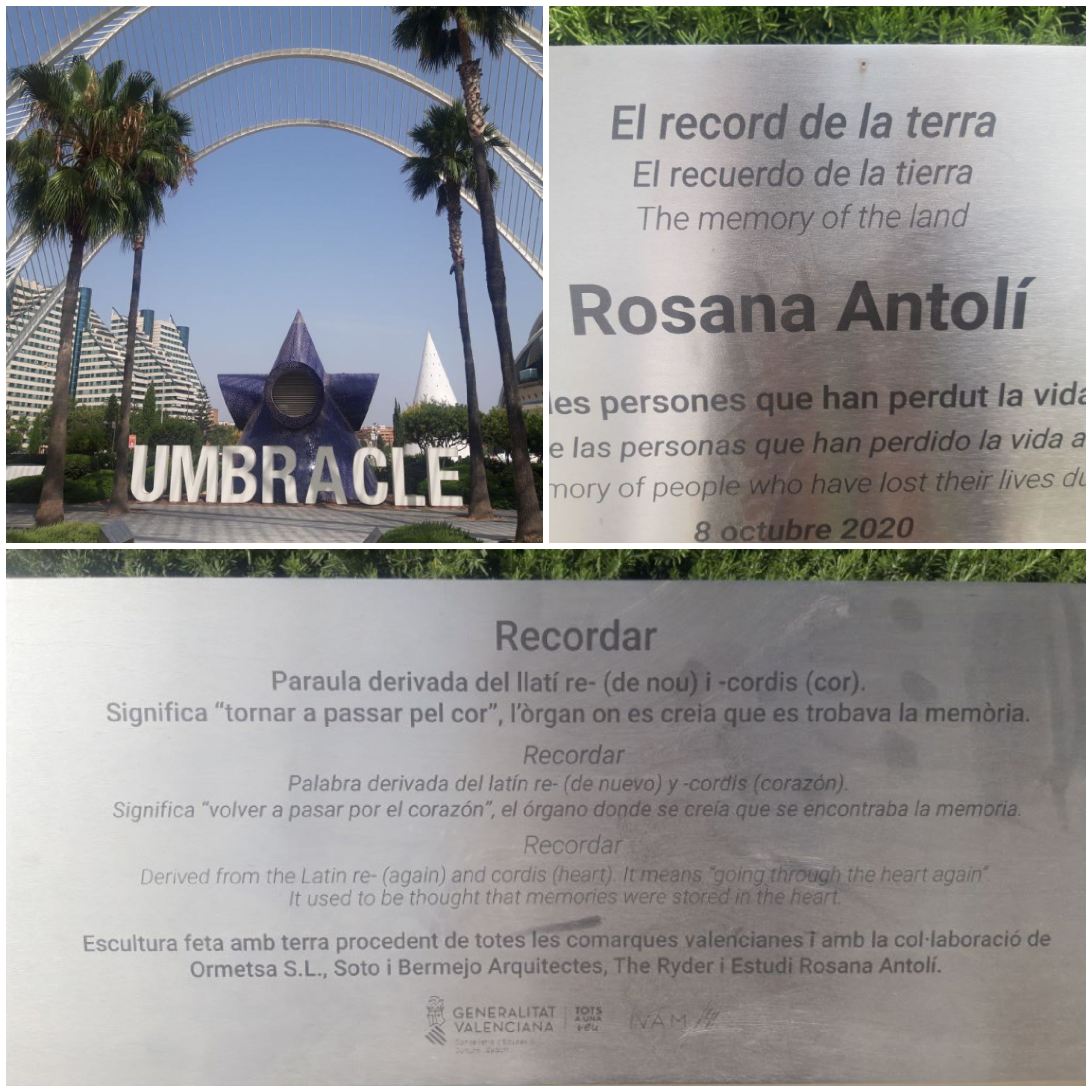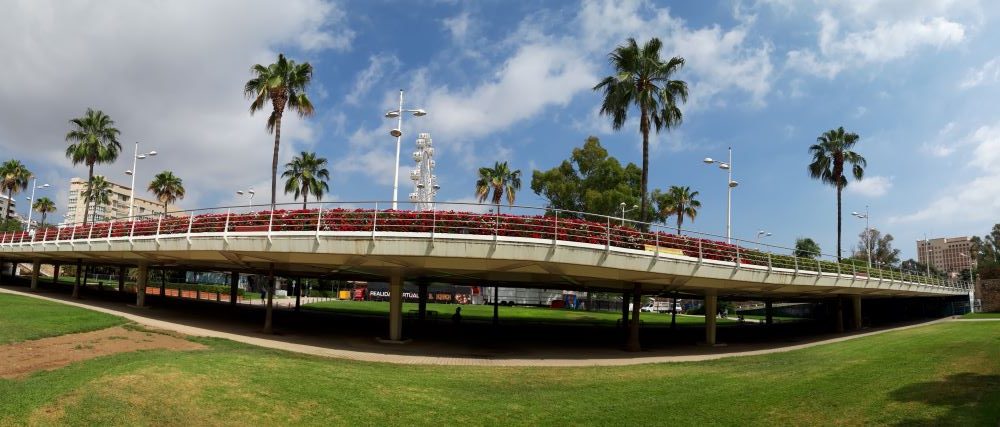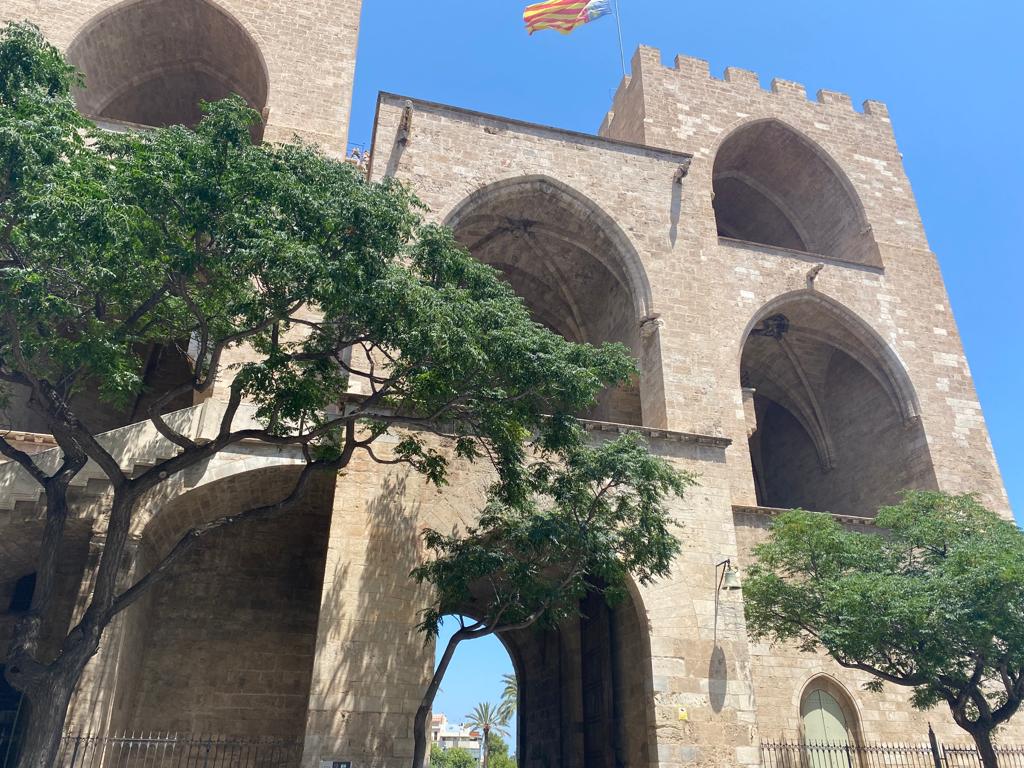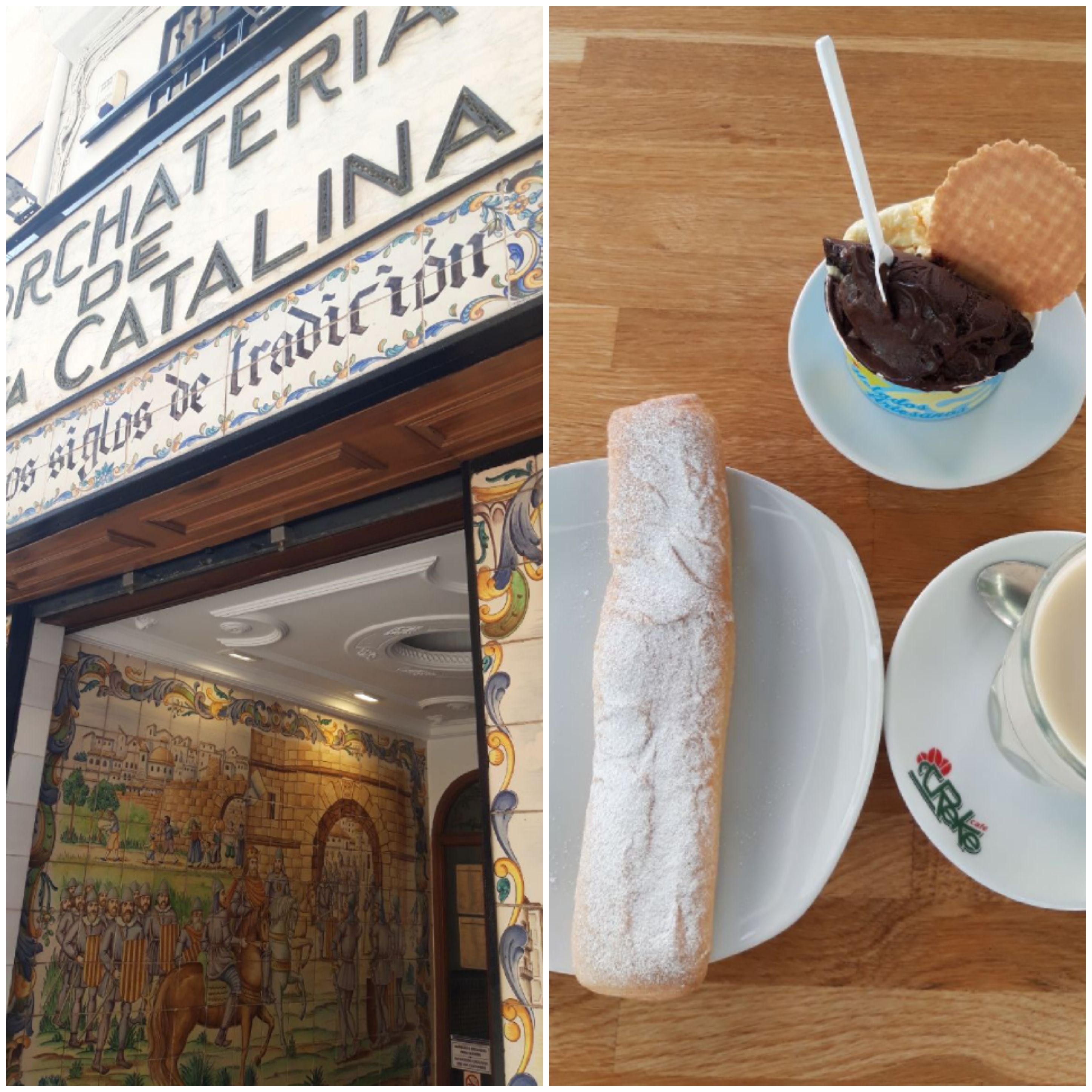La mia amica e compagna di viaggi Monica racconta la sua esperienza a Valencia, una città di cui mi ha parlato con grande entusiasmo. Questo articolo è una preziosa guida anche per me, che ho sostato qui solo per un giorno molti anni fa. Ma sicuramente Valencia merita di essere visitata a fondo per più di un giorno.
A summer holiday in Valencia
My friend and travel mate Monica talks about her experience in Valencia, a city she spoke to me about with great enthusiasm. This article is a precious guide for me too, who stayed here for just one day many years ago. But Valencia certainly deserves to be visited thoroughly for more than one day.
16 – 23 luglio 2023
A luglio 2023 abbiamo trascorso otto giorni di relax a Valencia tra musei, mostre e mare. Valencia fa parte della comunità valenziana, è la terza città più grande della Spagna ed é città green 2024.
16 – 23 July 2023
In July 2023 we spent eight relaxing days in Valencia visiting museums, exhibitions and going to the sea. Valencia is part of the Valencian community, it is the third largest city in Spain and is a green city 2024.
Il viaggio è stato breve, due ore di volo Ryanair dall’aeroporto Venezia-Treviso a Valencia Manises. Abbiamo optato per raggiungere il centro città con la metro, un mezzo molto comodo per i trasferimenti dall’aeroporto. Con la carta ricaricabile SUMA T per zone A-B si prende la linea rossa 3 o la linea verde 5 fino alla fermata Colòn, durata del tragitto circa 30 minuti. Abbiamo acquistato anche la tessera SUMA per la zona A, 10 corse, che permetteva lo spostamento su tutti i mezzi pubblici.
The trip was short, a two-hour Ryanair flight from Venice-Treviso airport to Valencia Manises. We opted to reach the city centre by metro, a very convenient means of transport for transfers from the airport. With the SUMA T rechargeable card for zones A-B you take the red line 3 or the green line 5 to the Colòn stop, journey time approximately 30 minutes. We also purchased the SUMA card for zone A, 10 trips, which allowed travel on all public transport.
Le temperature erano alte ma comunque gradevoli per visitare. Se venite a Valencia in estate, avrete l’occasione di vedere dall’1 al 25 luglio vari eventi nella Feria de Julio, che si concludono con la battaglia dei fiori.
The temperatures were high but still pleasant to visit. If you come to Valencia in summer, you will have the opportunity to see various events in the Feria de Julio from 1 to 25 July, which end with the battle of the flowers.
Che cosa visitare
Abbiamo scelto di alloggiare nella città vecchia (Ciutat Vella) per poter respirare meglio l’anima di Valencia ed esplorarla dal suo cuore verso l’esterno. Abbiamo dedicato i primi giorni alla visita di questa parte della città.
What to visit
We chose to stay in the old city (Ciutat Vella) to better feel the essence of Valencia and to explore it from its heart outwards. We spent the first few days visiting this part of the city.
Plaza de la Virgen è il cuore spirituale della città, dove si trova la piazza con la grande fontana che rappresenta il fiume Turia. Di fronte si trova La Catedral o La Seu, costruita sul sito della moschea cittadina (a sua volta costruita su quella che era una chiesa visigota), che custodisce il Sacro Graal. Dall’interno della cattedrale si accede alla scala che porta alla torre campanaria El Miguelete, torre gotica di 207 gradini alta 51 metri, a pagamento, per ammirare la città dall’alto.
Plaza de la Virgen is the spiritual heart of the city, where there’s the square with the large fountain representing the Turia river. Opposite is La Catedral or La Seu, built on the site of the city mosque (itself built on what was a Visigothic church), which houses the Holy Grail. From inside the cathedral you can access the staircase that leads to the El Miguelete bell tower, a 51 metre high Gothic tower with 207 steps, for a fee, to admire the city from above.
Plaza de la Reina è l’altra grande piazza pedonalizzata a sud della cattedrale; qui al mattino ci sono tutti i caffè gremiti di persone, mentre alla sera si radunano molti turisti per ascoltare musica di vari buskers.
Plaza de la Reina is the other large pedestrian square south of the cathedral; here in the morning all the cafes are packed with people, while in the evening many tourists gather to listen to music from various buskers.
Plaza del Ayuntamiento è circondata di edifici importanti quali il Municipio, il palazzo delle Poste e telegrafi, e l’edificio Rialto che comprende un teatro, una filmoteca ed una sala concerti.
Plaza del Ayuntamiento is surrounded by important buildings such as the Town Hall, the Post and Telegraph building, and the Rialto building which includes a theatre, a film library and a concert hall.
Il Barrio del Carmen è un quartiere caratterizzato da un dedalo di viuzze attorno a Plaza de la Virgen, Plaza de la Reina e Plaza del Ayuntamiento, ed offre scorci insoliti. Esso è un museo a cielo aperto, fulcro della street art. Non lontano dalla Lonja, soprattutto in Placa de Sant Jaume, el Carrer de Baix, Carrer de Morella, Carrer Dalt e Calle Santo Tomas, passeggiando qua e là si possono vedere moltissimi esempi di arte urbana, graffiti di grandi dimensioni accanto ad altri più piccoli ma non meno affascinanti.
Barrio del Carmen is an area featured by a maze of alleys around Plaza de la Virgen, Plaza de la Reina and Plaza del Ayuntamiento, and offers unusual views. It is an open-air museum, the heart of street art. Not far from Lonja, especially in Placa de Sant Jaume, el Carrer de Baix, Carrer de Morella, Carrer Dalt and Calle Santo Tomas, walking here and there you can see many examples of urban art, large graffiti as well as smaller ones, but no less fascinating.
Lo sguardo viene continuamente catturato dai vivaci colori di creazioni di arte da strada dipinti sulle serrande abbassate nei negozi (che si possono vedere alla chiusura) o sui muri. Qui artisti famosi come La Nena Wapa Wapa, Julieta XLF, Disney-lexya, Escif (il Banksy spagnolo), Hyuro, Deih, David de Limòn e i suoi ninja che appaiono e scompaiono nei vicoli, l’italiano Blu ed Ericailcane hanno lasciato il loro segno.
The eye is continually caught by the brightly coloured street art creations painted on the lowered shutters in shops (which can be seen when they close) or on the walls. Here famous artists such as La Nena Wapa Wapa, Julieta XLF, Disney-lexya, Escif (the Spanish Banksy), Hyuro, Deih, David de Limòn and his ninjas who appear and disappear in the alleys, the Italian Blu and Ericailcane have left their mark.
I due principali esempi di street art valenzana sono Plaza del Carmen e Calle de los Colores; quest’ultimo una volta non era una zona sicura, ma è stato riqualificato tramite un’iniziativa del fotografo Alfonso Calza, che ha trasportato l’arte in questa via di 60 metri. Famoso è il suo muro #KissMeVic. Anche nel quartiere dei pescatori di El Cabanyal e a Benimacle si trovano altri esempi di street art. Girando basta guardarsi attorno e si scoprono! E ricordatevi che “hay calle de paso y una calle donde todo pasa“.
The two main examples of Valencian street art are Plaza del Carmen and Calle de los Colores; the latter was once not a safe area, but was redeveloped through an initiative by the photographer Alfonso Calza, who took art to this 60-metre street. His #KissMeVic wall is famous. Other examples of street art can also be found in the fishing district of El Cabanyal and in Benimacle. While walking, just look around and you will discover them! And remember that “hay calle de paso y una calle donde todo pasa“.
Vale la visita il Museo de la Seda in Calle Hospital 7 presso il palazzo dell’antico Colegio del Arte Mayor de la Seda. Il costo del biglietto con audioguida in italiano è di € 8,00. Esso illustra la storia e l’importanza della seta nella cultura e nell’economia valenciana, il ciclo di vita del baco da seta e l’utilizzo di questo tessuto nella moda del tempo.
The Museo de la Seda is worth a visit. It’s in Calle Hospital 7 in the building of the ancient Colegio del Arte Mayor de la Seda. Tickets with audio guide in Italian cost € 8.00. It illustrates the history and importance of silk in Valencian culture and economy, the life cycle of the silkworm and the use of this fabric in the fashion of the time.
La commercializzazione della seta avveniva presso la Lonja de la Seda (Borsa della seta) nel quartiere dei Velluters. L’edificio in stile gotico, patrimonio dell’umanità Unesco, era utilizzato un tempo dai mercanti della città per lo scambio delle merci. In molti angoli e vetrine della città sono inoltre esposti gli abiti tradizionali delle falleras, indossati durante la festa delle fallas, fatti con tessuti preziosi e ricchi ornamenti.
The marketing of silk took place at the Lonja de la Seda (Silk Exchange) in the Velluters district. The Gothic-style building, a UNESCO world heritage site, was once used by the city merchants for the exchange of goods. In many corners and shop windows of the city, the falleras’ traditional clothes are also displayed; they were worn during the fallas festival and made with precious fabrics and rich ornaments.
Passeggiando colpisce la facciata del Museo Nazionale della Ceramica González Martí, meglio conosciuto come Palazzo del Marqués de Dos Aguas. Il palazzo mostra sfrontatamente questa facciata scolpita in alabastro con richiami barocchi, e viene considerato oggi il miglior esempio di Barocco in Spagna. All’interno si possono visitare le sue sale ed ammirare i gioielli artigianali.
While walking, you are impressed by the facade of the González Martí National Ceramics Museum, better known as Palace of the Marqués de Dos Aguas. The palace boldly displays this façade sculpted in alabaster with Baroque references, and is today considered the best example of Baroque in Spain. Inside you can visit its rooms and admire the handcrafted jewels.
Andate a vedere anche la Estaciòn del Norte, la stazione ferroviaria in stile modernista del 1917. Entrando si noterà subito l’atrio adorno di murales e mosaici in ceramica e molte targhe con l’augurio di “Buon Viaggio” in tutte le lingue principali europee (spagnolo, portoghese, italiano, francese, tedesco, greco, inglese, ecc.). Hanno un sapore retrò le biglietterie in legno ed è incantevole la sala a destra dell’ingresso con i dipinti su ceramica di Muñoz Dueñas.
Also go and see the Estación del Norte, the modernist-style train station from 1917. Upon entering you will immediately notice the atrium adorned with murals and ceramic mosaics and many plaques with the wish of “Have a good trip” in all the main European languages (Spanish, Portuguese, Italian, French, German, Greek, English, etc.). The wooden ticket offices look retro and the room to the right of the entrance with its ceramic paintings by Muñoz Dueñas is enchanting.
Vicino alla Estaciòn del Norte vi è Plaza de toros, dove si svolgono le corride durante la Feria de Julio e le Fallas. Questa arena in stile neoclassico è fortemente ispirata all’architettura romana del Colosseo; con la sua imponente struttura cilindrica con mattone a vista e quattro ordini di arcate, essa fu dichiarata Monumento Storico Artistico Nazionale nel 1983, ed è divenuta una delle grandi attrazioni turistiche di Valencia.
Near the Estacion del Norte there is the Plaza de toros, where bullfights take place during the Feria de Julio and the Fallas. This neoclassical-style arena is highly inspired by the Roman architecture of the Colosseum; with its imposing cylindrical structure with exposed brick and four orders of arches, it was declared a National Historic-Artistic Monument in 1983, and has become one of the great tourist attractions of Valencia.
Negli ultimi anni Valencia è diventata popolare soprattutto tra gli italiani (questa informazione ci è stata data dal personale al museo della scienza) per la moderna Ciudad de las Artes y las Ciencias. Il valenciano Santiago Calatrava ha disegnato i ponti dalle linee sinuose ed il suo nome è legato anche alla creatività delle sue costruzioni futuristiche della Ciudad de las Artes y Ciencias. Arrivando con il bus 85 si intravede subito il profilo dell’architettura futuristica che si riflette nelle lagune intorno. Qui si può trascorrere una giornata intera visitando il Museo delle Scienze e l’Oceanografico.
In recent years Valencia has become popular especially among Italians (this information was given to us by the staff at the science museum) due to the modern Ciudad de las Artes y las Ciencias. Valencian Santiago Calatrava designed the bridges with sinuous lines and his name is also linked to the creativity of his futuristic buildings of the Ciudad de las Artes y Ciencias. Arriving by bus 85 you immediately glimpse the profile of the futuristic architecture reflected in the surrounding lagoons. Here you can spend a whole day visiting the Science Museum and the Oceanographic Museum.
Per ripararsi un po’ dalla calura estiva si può passeggiare sotto l’Umbracle: al centro vi è il monumento recente di Rosana Antoli che si chiama “El record de la terra” (spagnolo “El recuerdo de la tierra”) come memoria delle persone che hanno perso la vita a causa del Covid.
To shelter a little from the summer heat you can walk under the Umbracle: in its centre Rosana Antoli’s recent monument called “El record de la terra” (Spanish “El recuerdo de la tierra”) is in memory of the people who lost their lives due to Covid.
Abbiamo scoperto che Valencia è una città percorribile a piedi, ma è anche bike-friendly: essendoci infatti moltissime piste ciclabili, un mezzo comodo per esplorare la città è la bicicletta. In tutte le zone della città e presso gli hotel si trovano punti di noleggio di bici; noi ci siamo trovati molto bene con il servizio di rentalbike, Sagunto 1, bajo derecha, Tel. +34 699 145384, a due passi dal ponte delle Torri de Serranos.
We discovered that Valencia can be explored on foot, but it is also bike-friendly: as there are many cycle paths, a convenient way to explore the city is by bicycle. In all areas of the city and at the hotels there are bike rental points; we were very happy with rentalbike, Sagunto 1, bajo derecha, Tel. +34 699 145384, very close to Torri de Serranos bridge.
A circa 3 km dal centro città si trova il Poblats Maritims, che abbiamo raggiunto sia con i mezzi pubblici (Tram Dr Lluch) sia con la bicicletta seguendo la pista ciclabile lungo il percorso del Jardin del Turia.
About 3 km from the city centre is the Poblats Maritims, which we reached both by public transport (Tram Dr Lluch) and by bicycle following the cycle path along the Jardin del Turia route.
La zona marittima è suddivisa nella Playa de Las Arenas, Playa de la Malvarrosa, Playa de la Patacona. Valencia non è propriamente famosa per il suo mare, ma si può trascorrere una piacevole giornata in una delle sue spiagge. Si tratta di spiagge libere dove è super consigliato acquistare un ombrellone in uno dei tanti stand lungo la spiaggia perché il sole è molto forte e difficilmente si riesce a resistere per più di qualche ora.
The maritime area is divided into Playa de Las Arenas, Playa de la Malvarrosa, Playa de la Patacona. Valencia is not really famous for its sea, but you can spend a pleasant day on one of its beaches. These are free beaches where it is highly recommended to buy an umbrella in one of the many stands along the beach: it is difficult to resist for more than a few hours under the scorching sun.
Il Jardin del Turia è stata una vera e propria scoperta. E’ il letto del vecchio fiume che nel 1960 è stato fatto deviare dopo le continue inondazioni della città. Si tratta di 9 km percorribili a piedi o bici grazie ad una doppia pista ciclabile, ed è il polmone verde della città con zone sportive e ludiche e tanti spazi dove sostare. Lungo il percorso si incontra il Palau de la Musica ed il Parc Gulliver: quest’ultimo è un parco di scivoli dove i bambini esplorano l’enorme figura di 70 metri che rappresenta Gulliver, scalando e scivolando lungo la testa, i capelli e le gambe, proprio come i Lillipuziani.
The Jardin del Turia was a real discovery. It is the bed of the old river which was diverted in 1960 after the continuous flooding of the city. Its 9 km can be covered on foot or by bike thanks to a double cycle path. Also it is the green lung of the city with sports and recreational areas, as well as many spaces to rest. Along the route you see the Palau de la Musica and Parc Gulliver: the latter is a slide park where children explore the enormous 70 metre figure representing Gulliver, climbing and sliding along his head, hair and legs, just like the Lilliputians.
Nel giardino si incontrano ben 18 ponti. Alcuni sono storici: quello di San José (XVII sec.), Serranos (XVI sec.), Trinidad (XV sec.), Puente del Real (XVI sec.) e Puente del Mar (XVI sec.). Altri son più recenti: il Puente de la Exposición, il Puente del 9 d’Octubre, el Puente de las Flores e il Puente de l’Assut d’Or, quest’ultimo progettato da Calatravatra. Quello più spettacolare è il Puente de las Flores, che viene decorato con migliaia di gerani colorati.
In the garden there are 18 bridges. Some are historical: the one of San José (17th century), Serranos (16th century), Trinidad (15th century), Puente del Real (16th century) and Puente del Mar (16th century). Others are more recent: Puente de la Exposición, Puente del 9 d’Octubre, Puente de las Flores and Puente de l’Assut d’Or, the latter designed by Calatravatra. The most spectacular one is Puente de las Flores, which is decorated with thousands of colourful geranium.
L’antico letto del Turia passa davanti anche ad un importante luogo di riferimento come le torri di Serranos, la porta dell’antica muraglia che cingeva Valencia e che oggi ha un belvedere sui giardini e sul centro storico.
The ancient bed of the Turia also passes in front of an important landmark such as the Serranos towers, the gate of the ancient wall that surrounded Valencia and which today has a lookout over the gardens and the old town.
Durante il nostro soggiorno abbiamo anche avuto la gradita sorpresa di visitare una mostra dedicata a Botero presso la Fundacion Bancaja, omaggio al pittore colombiano che sarebbe scomparso dopo qualche mese.
During our stay we also went to an exhibition on Botero at the Fundacion Bancaja, which was an appreciated surprise: a tribute to the Colombian painter who would disappear after a few months.
Dove mangiare
Valencia è famosa per il riso (arroz) che è alla base di molti suoi piatti, tra cui il più conosciuto è la paella valenciana. Tutti i locali propongono tapas: qui sono veri e propri piatti, non spuntini, come patatas bravas, calamari alla romana o ai ferri, fave stufate, insalata russa, alici fritte o sott’aceto, calamaretti o moscardini, polpo alla brace, gamberi alla piastra o all’aglio, lumache, crocchette o tortillas.
Where to eat
Valencia is famous for rice (arroz) which is the basis of many of its dishes, the best known of which is Valencian paella. All places offer tapas: here they are real dishes, not snacks, such as patatas bravas, Roman-style or grilled calamari, stewed broad beans, Russian salad, fried or pickled anchovies, calamari or baby octopus, grilled octopus, grilled prawns griddle or garlic, snails, croquettes or tortillas.
La maggior parte della frutta e della verdura che viene servita proviene dalla Huerta, ossia orto, una fertile pianura ricca di agrumeti, vigneti, olivi ed orti irrigati secondo una rete di canali ideata dai Mori; il riso proviene dalle risaie di La Albufera. Valencia è una città che si può approvvigionare con prodotti di stagione e dal 2019 è sede del Centro Mondiale per l’Alimentazione Urbana Sostenibile della FAO. E’ interessante fare una visita al Mercado Central (lunedì-sabato h 07.30-15.00) dove si possono acquistare prodotti locali freschi.
Most of the fruit and vegetables served come from the Huerta, or vegetable garden, a fertile plain full of citrus groves, vineyards, olive trees and vegetable gardens irrigated by a canal network made by the Moors; rice comes from the rice fields of La Albufera. Valencia is a city that can supply itself with seasonal products and since 2019 it has been home to the FAO World Centre for Sustainable Urban Food. It is interesting to pay a visit to the Mercado Central (Monday-Saturday 07.30 am – 3.00 pm) where you can buy fresh local products.
Alla sera è molto popolare mangiare nell’Eixample, nelle vie di Russafa, oppure sul lungomare a El Cabanyal vicino al porto. Anche nella zona Malvarosa ci sono i famosi locali storici Casa Isabel, Casa Carmela e casa Navarro. Ma anche al Mercado del Colon si possono gustare ottimi piatti a prezzi economici.
In the evening it is very popular to eat in Eixample, in the streets of Russafa, or on the seafront in El Cabanyal near the port. Also in the Malvarosa area there are the famous historic places Casa Isabel, Casa Carmela and Casa Navarro. But also at the Mercado del Colon you can enjoy excellent dishes at cheap prices.
Non può mancare una sosta per gustare la famosa bevanda valenciana horchata fatta con le chufas (noci di tigre). Ormai tutte le caffetterie e gelaterie la offrono, ma fermarsi alla storica Horchateria de Santa Catalina e assaggiarla assieme a dei fartòns (panini dolci di pasta lievitata coperti di glassa) ha tutt’altro sapore! Nonostante il caldo abbiamo gustato anche la cioccolata con i churros, immancabile sosta!
You can’t miss a stop to taste the famous Valencian drink horchata made with chufas (tiger nuts). Nowadays all the cafés and ice cream parlours offer it, but tasting it at the historic Horchateria de Santa Catalina together with some fartòns (sweet leavened dough rolls covered in icing) has a completely different flavour! Despite the heat we also enjoyed chocolate with churros, an unmissable stop!
